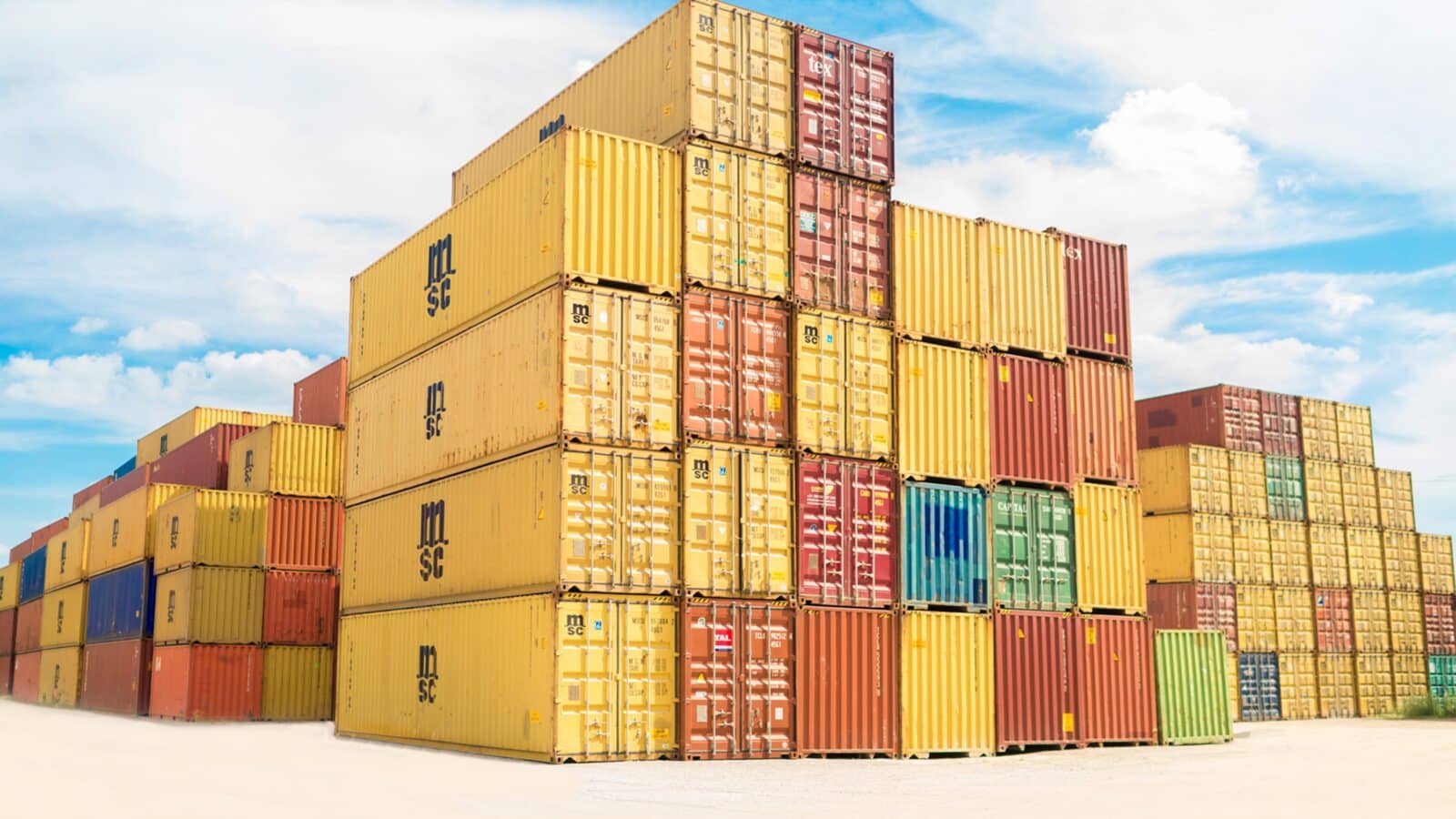Why worry about an empty box?
Next time you watch an ‘unboxing’ event , spare a thought for the much larger box that product came in. Sea freight containers don’t usually attract much attention outside the freight industry but have been getting some more publicity lately. The COVID-19 pandemic and lockdowns have made many of us more aware of our reliance on global supply chains, and major incidents like the blocking of the Suez Canal earlier this year have thrust international shipping into the limelight.
The canary in the cage
Repositioning empty sea freight containers is an important but often neglected task within supply chains. Managing empty containers has become surprisingly complicated, and increasingly expensive business in Australia. In most cases, sea freight containers are owned by international shipping lines. After they are unpacked, they are then returned (or ‘de-hired’) to the shipping line for reuse. This may involve the container being temporarily stored at an empty container park, returned directly to the port, or given to an exporter to fill with cargo. The overall number of containers that come into a port match the number going out, with import containers ultimately leaving the port either as ‘full exports’ or ‘empties’. Management of empty containers can be a particular challenge in situations where a port imports more cargo than it exports. This is particularly the case in Sydney, where for every one full container that is exported, there are approximately two and a half full containers imported.
Like other tasks in supply chains, the management of empty containers involves physical movements, commercial agreements and a series of transactions between different players including shipping lines, cargo owners, transport operators, technology vendors and operators of storage facilities. In recent years, sections of the freight industry have raised concerns about increasing costs, inefficiencies and unfair commercial practices in this part of the supply chain and have called for government intervention.
Government should be interested the management of empty containers given our dependence on container trade and imported consumer goods. Australian ports handle over 8 million containers each year and support trade worth many billions of dollars. Empty container management is a vital function of an efficient and effective container port. Issues with empty containers have broader supply chain impacts. In this respect, empty container management is an indirect indicator of efficiency – a little like a ‘canary in the cage’ for container ports.
Supply chain vulnerability
We’ve recently helped several clients get a better understanding of the empty container supply chain, and opportunities to improve its efficiency. We studied the NSW empty container supply chain in detail in early 2020, and subsequently helped Transport for NSW facilitate an industry working group looking at solutions that could be implemented on a voluntary basis. More recently, we have undertaken a similar study in Victoria.
Our NSW study revealed that empty container storage capacity had not kept pace with the growing demand for containerised freight. Various other requirements, practices and procedures were also found to be having a negative impact on the supply chain, such as equipment handling practices by shipping lines, additional customs requirements and variations in operating practices across empty container parks. We estimated that inefficiencies in the NSW empty container supply chain result in an estimated additional cost to the supply chain of $49 million per year, and could increase to $100 million per year by 2040.
Our recent study for Freight Victoria confirmed that many of these issues are also posing challenges there too. However empty container supply chain in Victoria appears better equipped to handle import surges and supply chain disruptions when compared to Sydney. Melbourne has 40-50% more empty container storage capacity compared to Sydney, and trade is more balanced in Melbourne compared to Sydney where full imports heavily outweigh full exports. The more balanced nature of trade in Melbourne reduces the reliance on empty container parks for storage of empty containers.
In NSW, various improvements have been implemented by industry since the study was undertaken, including extended operating hours for empty container parks, improvements to booking systems, and new empty container parks, help to alleviate some of the pressure. Despite this, major challenges arose in 2020. Bushfires, the COVID-19 pandemic, bad weather and industrial action at stevedore terminals came at a time when the supply chain was most vulnerable, increasing the surplus of empty containers in Sydney which amplified existing problems. Added to this, import volumes have surged during the COVID-19 pandemic because of increased spending on consumer goods. Full import volumes in Q1 2021 were 23% higher when compared to Q1 2020. This increased the number of empty containers needing to be returned to overseas markets at a time when there was already a large surplus.
Fortunately, improvements were implemented by the industry and supply chains have continued to function despite challenges. Short term increases in container storage capacity, improvements at empty container parks and increased ‘evacuations’ of surplus empty containers by shipping lines have helped to alleviate pressure on the supply chain. In September 2020, empty container parks in the Port Botany precinct were operating at 119% capacity, leading to a high level of empty redirections, temporary closures of empty container parks, and empty equipment for some shipping lines unable to be de-hired at any return facility. By July this year, Port Botany precinct empty container parks were operating at around 94% capacity (up from 90% in June). This is much higher than operators would like, but the canary is still on the perch for now.
Focusing on the measures that matter
Our study of the supply chain in NSW found that voluntary actions, supported by better sharing of data, could help to reduce unnecessary costs in the supply chain. Over the past 12 months, we have worked with Transport for NSW and industry stakeholders to develop a suite of performance measures based on data voluntarily provided by members of the working group. Transport for NSW and members of the working group have agreed to publish the performance measures in the interests of transparency and helping to encourage positive changes in behaviour in the supply chain. The performance measures have led to a better shared understanding of supply chain performance and the factors influencing it. Indicators of how empty containers are moving through the supply chain, such as load discharge ratio, and the length of time that containers are stored for (‘dwell time’) have been a focus, reducing the emphasis on fixed storage capacity – which does not fix all the inefficiencies and is difficult to change in the short term.
Load-discharge ratio is a simple measure of the number of containers moved in and out of a port, which gives an immediate indication of whether trade is contributing to, or reducing, surplus empty containers. A load-discharge ratio of greater than one means that there are more containers going out of port versus coming in. From late 2020, there has been a substantial improvement in the load-discharge ratio at Port Botany, reducing the backlog of surplus empty containers and taking pressure off the supply chain.
Based on recommendations from our study in Victoria, load-discharge ratio has recently been included in the Voluntary Performance Monitoring Framework which provides quarterly reports on the performance of the Port of Melbourne landside container supply chain. The experience in NSW over the past 12 months demonstrates the willingness of industry to voluntarily share data in situations where efforts are made to address problems that impact on multiple parts of the supply chain. This could provide some useful lessons for other freight data sharing initiatives, such as the the National Freight Data Hub.
Improving performance through pricing
The owner of Port Botany, NSW Ports has recently changed the way that it charges shipping lines for using the port (referred to as ‘wharfage’). The Empty Container Incentive Scheme (ECIS) involves a variable wharfage charge, with discounts, or penalties applied to a base rate depending on load discharge ratio rates . The purpose of the scheme is to incentivise the shipping industry to better balance imports and exports, to reduce the build-up of empty containers. Shipping lines oppose the scheme , but landside operators are more supportive. It will be interesting to see what impact this has. If effective, it could improve the flow of empty containers and help to reduce some of the costs associated with empty container management.
While further actions are needed to improve supply chain performance, it is encouraging to see that progress has been achieved during a challenging period without market intervention. Here’s hoping that things continue to improve in this part of a very important supply chain.


